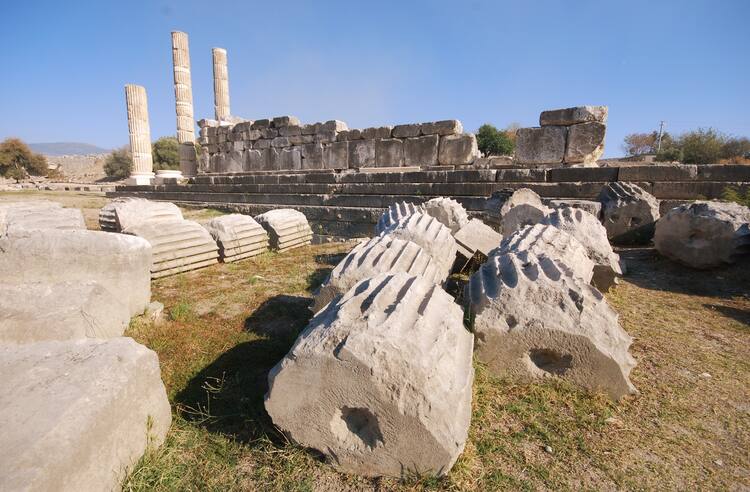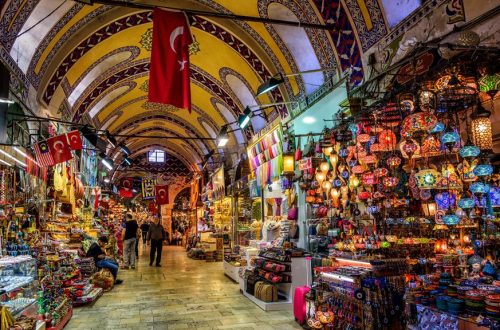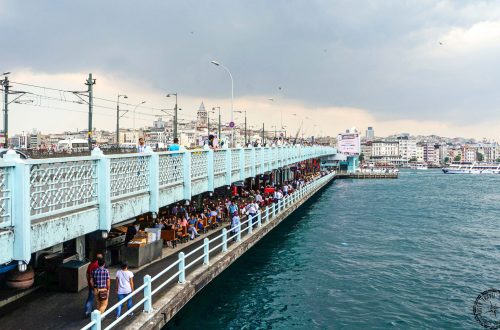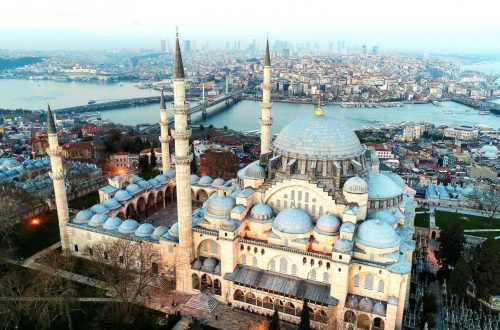
Xanthos
Xanthos: A Ruin with 17 amazing sights
I was in the ruins of Xanthos while touring the Lycian coast.
I will now explain you the most place from the UNESCO World Heritage together with tips for a trip to Xanthos.
17 most beautiful buildings from the ruins of Xanthos
I start with my pictures at the entrance to the ruins and walk once through the entire complex. I was accompanied by a man from the nearby village who had, for years, assisted the archaeologists in Xanthos. He is long since retired. Since then he has acted as a tour guide, showing the ruins to visitors in his spare time, sometimes several times a day.
Xanthos was once the capital of the Lycian League. It is famous as being one of the first democracies to exist in the world. The oldest surviving parts of the city are more than 2,600 years old.
The Lycian arrow tombs in Xanthos
In Xanthos I particularly noticed the arrow graves. You otherwise see them in only a few other places among the ancient ruins of Turkey. After all, they are located right here in the city, for example, on the square next to the Roman Theatre. The arrow graves are many centuries older than the theatre. The Romans took good care not to destroy the sarcophagi in the arrow graves.
Traces of the old Xanthos from the time of the Lycian League can be seen in many other places. This includes, for example, a pillar with the longest Lycian inscription.
The longest inscription in Lycian language
The meaning of the 2,400 year old inscription is unclear, as Lycian is still not fully understandable. I find it interesting that this pillar survived for so long on the place where the Roman Agora and the theatre were later constructed.
The Roman Theatre and the Acropolis
Today’s theatre dates back to the Roman times. It stands between the Roman Agora, the city walls and the Acropolis. You can tell from the high walls in the stage that it was a bloody theatre. That means, fights between gladiators and animals took place. The walls served as protection for the spectators.
Behind the theatre, a path leads to the Acropolis of Xanthos. It is one of the oldest parts of the city. It contained the houses of important residents and a large palace. Unfortunately, there is very little left of it. There you only see foundation walls and a few scattered stones. The view from the steep slope on which the palace stood down to the river Xanthos/Esen is beautiful.
The Acropolis is otherwise overgrown with grass. Goats that run freely through the ruins take advantage of this. All of Xanthos is alive. You can see animals everywhere.
The ruins of Xanthos are alive! Salamanders, goats, turtles, …
Animals are very common in the ruins of Turkey. For example, there are many cats in Ephesus. The goats in the ruins of Xanthos are relatively new. They run around freely and graze comfortably next to the old stones. Again and again salamanders scurry up the stones. Turtles hide among the grasses …
As if waiting to greet you at the ruins, a small dog is at the entrance, standing by at the cash desk. He is obviously very spoiled variety, as he immediately waits to be petted and some food.
The ruins of the western city
The theatre and the acropolis are in the eastern part of the ruins. A road separates the eastern from the western part. It leads past the theatre to the parking lot at the ruins. The cash desk is also located there, from which a wide, paved road leads directly to the Lycian agora. You keep seeing interesting things along the road. This includes, for example, a board game carved into a stone slab. It belonged to a shop in the agora. Back then, the salespeople played games when there were no customers. The game is said to have had similar rules as backgammon.
The ruins are spread over a large hill in the flat plain around Xanthos. The western part in particular is overgrown with grass and bushes. There have been few excavations in this part so far. They didn’t start in Xanthos until the 1950s and have been going on ever since.
Buildings from the Byzantine Empire are still interesting. You can still find some traces of this unusual architecture.
Ruins of a Byzantine basilica and sarcophagi
The importance of Xanthos during the Byzantine Empire can be seen by examining the ruins of a basilica. It was the seat of the local bishopric. The foundations of a monastery still stand on the uppermost hill of Xanthos. These were the last great structures erected in Xanthos before the city fell into decline.
The end of Xanthos is co-related to the ongoing Arab invasions of Anatolia, as did so many other cities in Turkey. The residents first withdrew behind the city walls at the Acropolis, but that didn’t help against the raids. Eventually, the city was abandoned after several raids. It is now 1,000 years since Xanthos was abandoned.
The ruins were not rediscovered until 1838. At that time, the British excavated the first parts of the ruins. They took many interesting finds with them, such as the Nereid monument and sarcophagi. Today, you can see them in the London Archaeological Museum.
Tips for a trip to Xanthos
I saw Xanthos while touring the Lycian coast. Unfortunately I did not have enough time to see all parts of the ruins as we arrived an hour late in Xanthos. We didn’t arrive to the ruins until 4:00 p.m., and the opening times for March were still valid – we had to leave by 5:00 p.m.
Interesting ruins in Xanthos that I couldn’t take pictures of are:
- Necropolis in the north
- The very well-preserved city walls in the north.
- Triumphal Arch in the South
- Ruins of a Byzantine monastery on the north hill
- Rock tombs
Together with Xanthos, you should try to visit the sanctuary of the Lycian Covenant, known as the Temple of Letoon. It is 2km away from Xanthos and, like the other ruins, are classified as a UNESCO World Heritage Site. In Letoon, you will see the ruins of a Leto, Artemis and Apollo temple. There is also a Greek theatre and a Byzantine monastery.
You can book organized excursions to Xanthos in the seaside resorts of the Lycian coast. These are mainly Kas, Kalkan, Ölüdeniz and Fethiye.
Unfortunately, there are no organized excursions to Xanthos from Antalya or the surrounding areas. To do this, you have to book a rental car.
April-October: 8.00 a.m. – 6.30 p.m.
Winter: November-March: 8 am-5pm
Have you seen the ruins of Xanthos before? How did you like them?




